
Global climate change presents long-term risks and opportunities for Russian agriculture. Agricultural crops have expanded northward, especially winter wheat. As was seen in 2010 and 2012, water scarcity is expected to increase along with increased frequency of extreme weather events. To adapt to these challenges, daily weather analytics and looking at long-term weather trends can empower governments, businesses and farmers to prepare for and become more resilient to climate change. For example, this June, Siberia experienced a 10C higher average temperature than normal (CNN) and because winters have also been warmer with melting of permafrost, these conditions lead to wildfires (CNN).
The benefit of a warming climate has been the expansion of agricultural land and the confidence of farmers to invest in improved seed and fertilizer. Winter wheat is cultivated in the North Caucasus and spring wheat in the Don Basin, in the middle Volga region, and in southwestern Siberia. Area expansion and use of modern inputs has resulted in Russia being the top wheat explorer for the past three years at about 35 million tonnes per year (World-Grain.com). Use of improved wheat varieties along with rapidly changing weather patterns means that targeting the deployment of new technology can be optimized with weather analytics. In this report we show these trends are changing and discuss what that means for wheat production in the region.
In 2020, much of Russia has experienced higher precipitation than normal for the critical mid-May to mid-June period. These rainfed wheat production areas, both winter and spring wheat, rely on June rains to support Russia’s record wheat production (see FAO Crop Calendar). However, July 2020 rainfall has been lower than normal in southern Russia and this could adversely impact Spring Wheat production (see maps below).
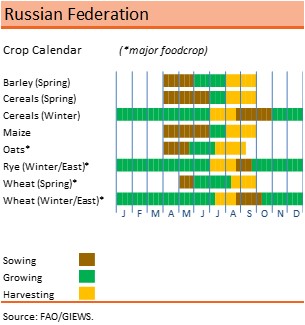
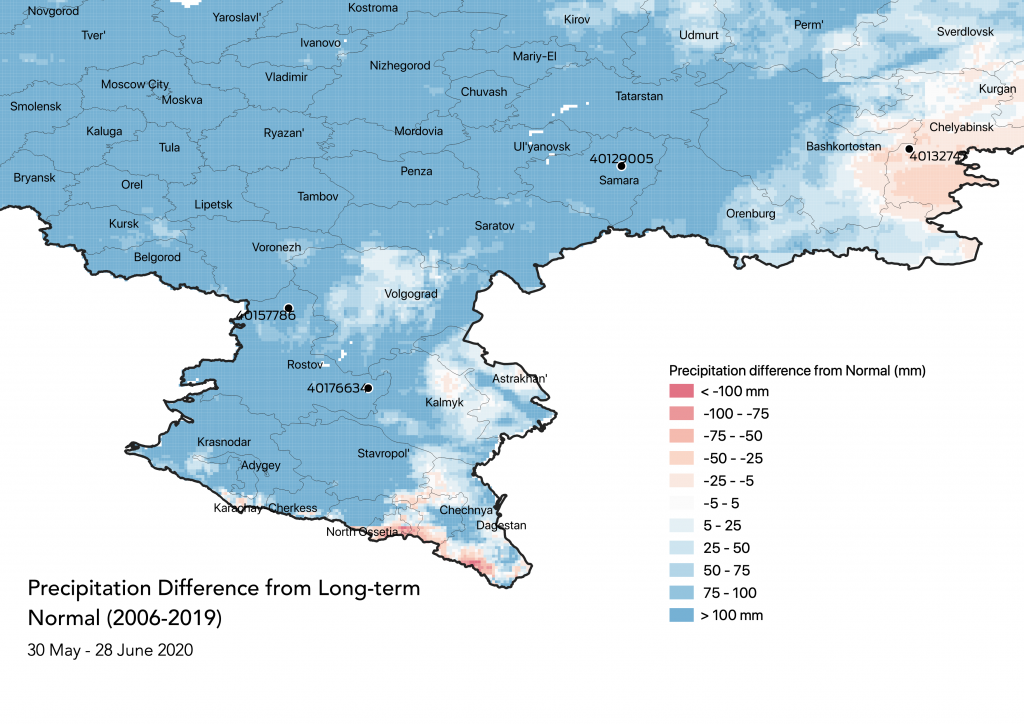
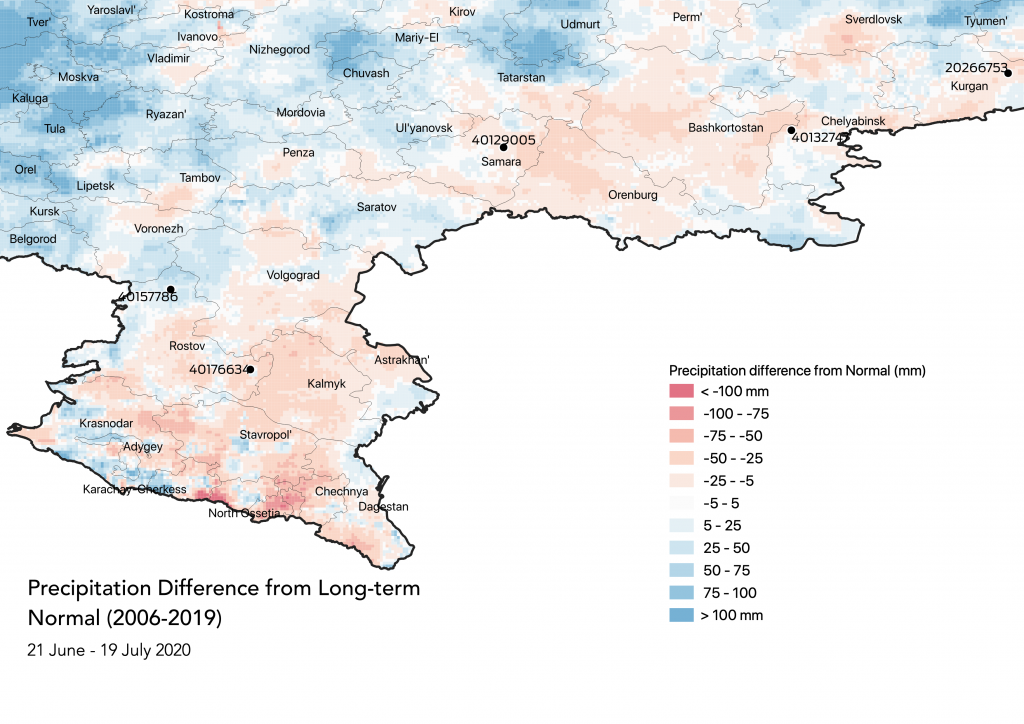
The warmer than normal conditions mean that wheat growth rates would have been high and aWhere’s analysis shows that the crop growing season has been expanding given the warmer spring temperatures in wheat-producing areas. The map below shows higher than normal temperatures in parts of the winter wheat growing areas of Russia.
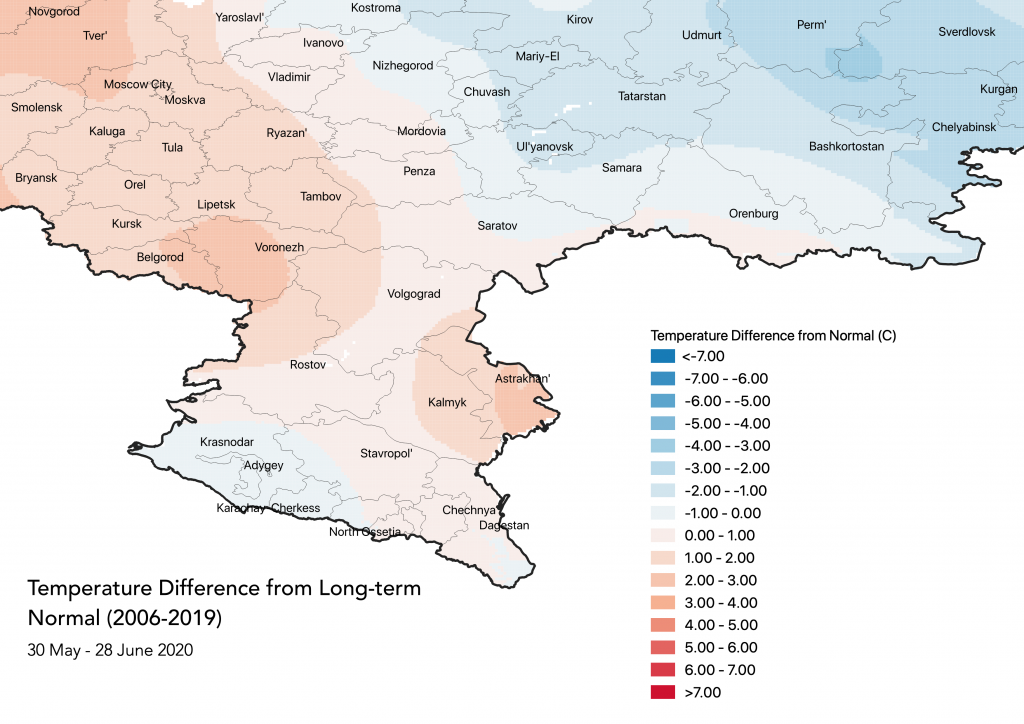
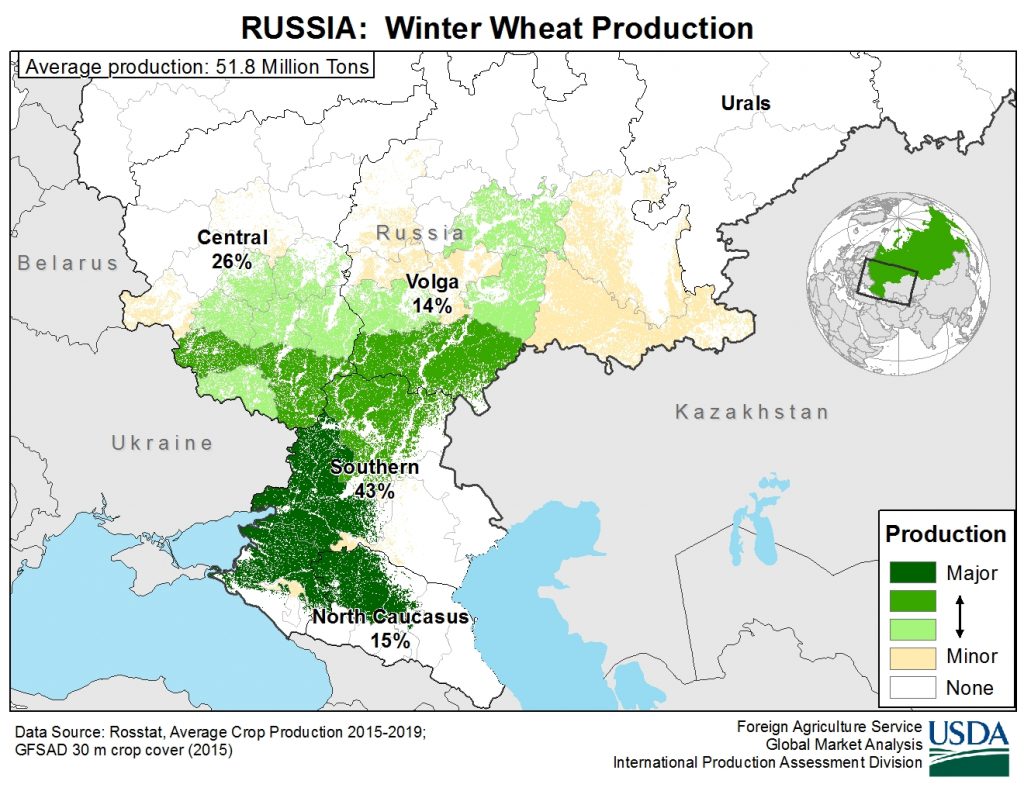
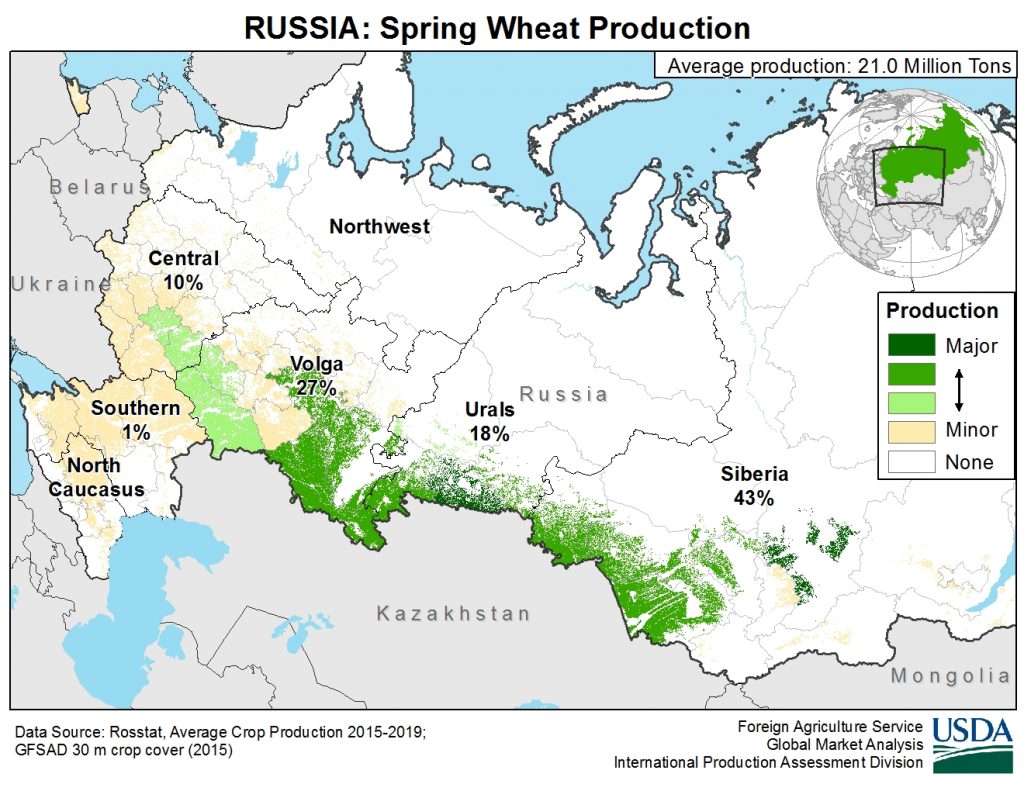
What these analyses point to is that the growing season for wheat as well as maize is longer now and with it the opportunity to grow longer duration varieties with higher yields and better grain quality. Targeting the exact deployment of these new varieties will require the use of high resolution weather data and analytical tools. aWhere’s gridded weather surfaces contain all the key variables of a weather station to identify emerging agro-ecological zones to optimize the selection of variety testing sites and target their deployment across Russia. aWhere has been supporting global seed companies in this manner but so much more can be done by integrating weather analytics into breeding workflows for seed companies. Both local and global efforts are helped by integrating weather analytics to realize the full potential of modern breeding programs.
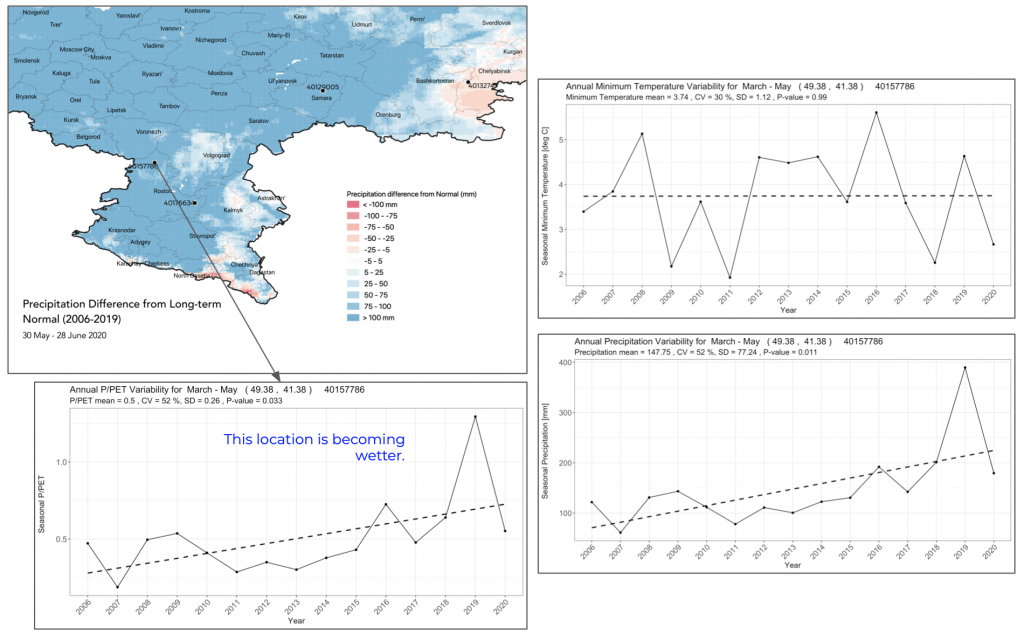
The warmer atmosphere has led to extreme rainfall events that are overwhelming infrastructure that was built to specifications based on rainfall patterns of 20 to 70 years ago. The dramatic changes in weather patterns of the past decade point to the urgent need to integrate modern weather analytics into the design of future bridges, dams, roads and cities. The trends in this area point to increasing and highly variable rainfall due to climate change. The charts below illustrate the annual rainfall trends for the period from Jun 7 – July 6 since 2006. Given these trends, engineering requirements would be well served by taking into account both the trend and increased variability in rainfall as bridges, dams and waterways are constructed to deliver economic resilience to climate change for the next 50 years.
To learn more about the data behind this article and what aWhere has to offer, visit https://www.awhere.com/.







Sign up to receive our stories in your inbox.
Data is changing the speed of business. Investors, Corporations, and Governments are buying new, differentiated data to gain visibility make better decisions. Don't fall behind. Let us help.













Sign up to receive our stories in your inbox.
Data is changing the speed of business. Investors, Corporations, and Governments are buying new, differentiated data to gain visibility make better decisions. Don't fall behind. Let us help.





